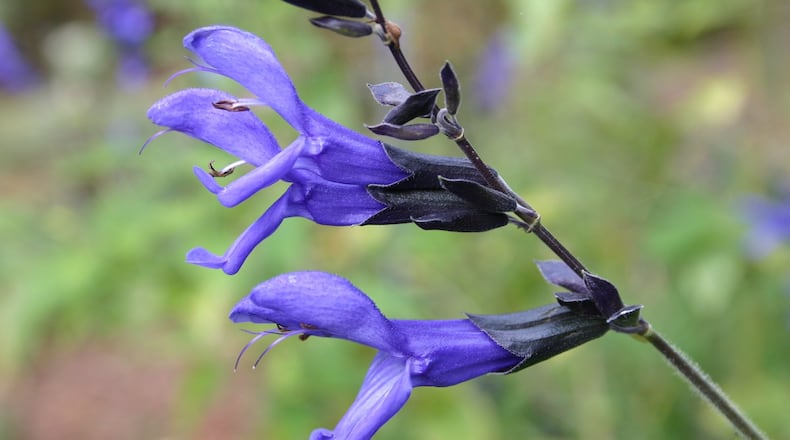Q: Several years ago, I planted 'Black & Blue' salvia. It has now spread across the entire back of my house and I want to get rid of it. Other than pull it up, a tough job due to the thick roots, do you have any suggestions? Patsy Sweeney, Grayson
A: My neighbor has a bed that is now 20 feet long and four feet wide filled with this salvia, which spread from what was once a small corner of the area. Hummingbirds and butterflies love the beautiful blue flowers in summer. It's limited on all four sides by pavement. The neighbor mows the bed to the ground every winter to remove the dead stems, and the salvia sprouts up a few weeks later. My suggestion to you is to use a sharpened shovel to dig clumps from your bed in spring when new growth emerges and share with your neighbors, with a warning about the spreading nature of the plant.
Q: I have bermuda in the front yard and Geo zoysia in the backyard. Is there any issue mowing both and risking cross-contamination with their seed? Jason Dale, email
A: If the front yard is common seed-producing bermudagrass, not a hybrid sodded bermuda, you might get some spots where bermuda grows in the zoysia. But you are in luck if you have sodded bermuda in front because sodded bermuda does not produce seeds. Geo is a zoysia cultivar that doesn't produce many seeds. For these reasons, I would not worry too much about cross-contamination of the two.
Q: I have young children and would like to know which plants in my landscape are poisonous. Randi Barth, email
A: Many landscape plants and houseplants are "poisonous" to one degree or another. It is always important to remember that "the dose makes the poison." One chewed and spit out berry from a particular plant might be harmless but a fistful that are chewed and swallowed could be dangerous. Nandina, holly, liriope and viburnum berries are all common but are not particularly dangerous, although all can cause stomach upset when consumed in large quantities. Several often-used landscape plants can be dangerous if their leaves are consumed, including boxwood, azalea, arborvitae, and hydrangea. Most, but not all, poisonous leaves are quite bitter, which limits the number that might be accidentally eaten. More poisonous plant lists at bit.ly/GApoison.
Q: Can variegated English ivy do damage to a cinder block wall? My house has a tall concrete block foundation in the back. Randy Harrison, email
A: I don't think the ivy will physically damage the cinderblock but it does provide a nice pathway for insects to crawl into the siding of your house. And if you decide you don't like it after all, the hold-tight tendrils are the very devil to remove from a rough surface.
About the Author
The Latest
Featured

